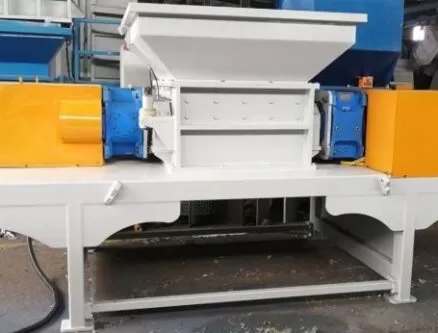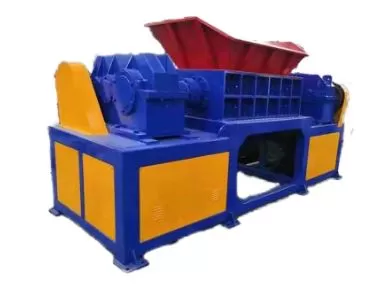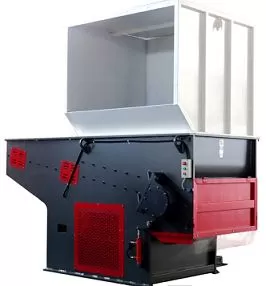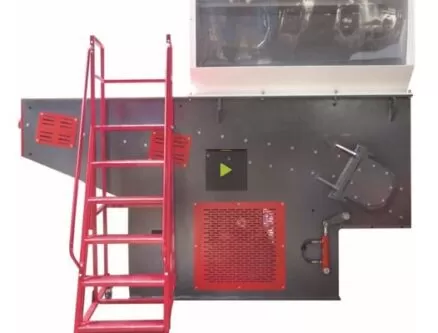Plastic waste is everywhere—and trust me, I’ve seen more bottle caps and buckets than I care to admit. As the CEO of Amige, I’ve worked with clients who are drowning in plastic waste and clueless about what to do with it. That’s where shredding comes in. If you’ve ever wondered how to start shredding plastic like a pro, you’re not alone. The process seems daunting—but once you get it, it’s oddly satisfying. Ready to tear some plastic up?
The easiest way to shred plastic for recycling is by using an industrial plastic shredder designed for the type of plastic waste you generate. You sort, clean, and feed the plastic into the shredder—boom, out come uniform flakes ready for reuse.
Let’s break it down. You don’t need to be an engineer, but knowing what to shred, how to shred it, and what to avoid is key. And I’ll share a few amusing stories from my plastic-shredding life too.

What types of plastic can be shredded?
Not all plastics are born equal. Some are soft, some are rigid, some are dangerous to process. But most thermoplastics can be shredded easily.
Let me list a few common plastics that we shred at Amige every day:
- PET (Polyethylene Terephthalate) – Think water bottles and food containers.
- HDPE (High-Density Polyethylene) – Detergent bottles, milk jugs.
- LDPE (Low-Density Polyethylene) – Plastic bags and wraps.
- PP (Polypropylene) – Car bumpers, bottle caps.
- PS (Polystyrene) – Disposable cutlery, CD cases.
Each plastic has its quirks. HDPE recycling rate is relatively high, while LDPE is harder to process.
Before you shred anything, check the resin identification code (those numbers inside the triangle). And always avoid PVC unless you like your machines clogged and your lungs smoked.

What tools or machines do I need to shred plastic?
You could use scissors—if you have all year.
But really, there are three main types of equipment:
- Bench-top plastic shredders – Great for labs and schools.
- Industrial shredders – My personal favorite. We build heavy-duty crushers that can shred barrels, crates, and even chairs.
- Granulators – These grind the shredded plastic down further into flakes or pellets.
In our factories, I’ve seen an industrial shredder eat a bucket in under 5 seconds. That’s what I call lunch.
For anyone just starting, a compact plastic shredder is enough. Just make sure it has safety guards—and don’t try to poke at the blades while it’s running. One guy tried that. He’s fine now, but his glove isn’t.
Do I need to clean the plastic before shredding?
Short answer: Yes. Long answer: Absolutely, 100%, no excuses.
Contaminated plastic doesn’t just gum up your machine—it also makes recycled material less valuable. If there’s oil, food residue, or labels, you’re asking for trouble.
Here’s our simple 3-step cleaning process:
- Soak and scrub – Use warm water and mild detergent.
- Dry completely – Moisture can mess with electrical parts and gum up flakes.
- Sort again – Make sure no metal or foreign materials are hiding inside.
Studies show that clean input improves recycling efficiency by over 40%. It also keeps your blades sharper longer. Because nothing dulls a shredder like a rock in a shampoo bottle.

What’s the actual shredding process like?
It’s easier than most people think.
Here’s the basic workflow:
- Feed plastic into hopper.
- Rotating blades cut plastic into chunks.
- Chunks fall through screen into bin.
- Collect the flakes.
- (Optional) Send to granulator for finer material.
In our factory, we sometimes do a double pass for thick plastic. That’s right—once through the shredder, and once more through the granulator. Makes the flakes smooth and uniform, like plastic snowflakes.
Just don’t overload the machine. One customer once shoved in a whole cooler box. The shredder choked, sighed, and quit. I swear it sulked for a week.
How do I store shredded plastic?
After shredding, you need to store your flakes or granules properly. Moisture, dust, and contamination can ruin good material.
We use:
- Plastic sacks or woven PP bags – Sealed and labeled.
- Storage bins with lids – Great for small-scale setups.
- Silos for bulk – If you’re shredding like a beast.
Make sure everything is dry. We once had a warehouse stink for a week because someone stored wet PET flakes in a closed drum. Think gym socks + rotting lettuce.
Moisture retention in recycled plastic increases rejection rates, especially in extrusion or molding processes.

Is plastic shredding profitable?
Here’s the golden question.
Yes—if you do it right. I’ve seen small businesses grow just by selling shredded plastic to molding companies or exporters. The key is:
- Consistent quality
- Clean, sorted input
- Reliable buyers
Prices for shredded HDPE flakes range from $300 to $700 per ton. PET can fetch more if clean and color-sorted. It all depends on your market and volume.
Bonus tip: If you can offer pre-washed, size-uniform flakes, you can charge more. Some of our clients brand their flakes as “premium feedstock.” Sounds fancy. Sells better.
What mistakes should I avoid?
Here are the top 5 facepalm-worthy mistakes I’ve seen (or made myself):
- Not wearing ear protection – Shredders are loud. Protect your hearing.
- Feeding unknown plastics – PVC or multilayer materials can ruin blades or release fumes.
- Overloading the machine – Slow and steady wins the plastic race.
- Skipping cleaning – Dirty input = bad output.
- Not maintaining blades – Dull blades mean poor output and burned motors.
If you want to stay in the game, treat your shredder like your pet—feed it right, clean it often, and don’t ignore weird noises.
Can I start a plastic shredding business from home?
Absolutely. And many people have.
You’ll need:
- A reliable small-scale shredder.
- Safety gear.
- Space for cleaning, shredding, and storage.
- A local buyer (check recyclers or manufacturers).
One guy in Kerala, India, started with just a used shredder and ended up supplying regrind to local factories. His story made me smile. Plastic pollution turned into income? That’s what I call poetic.
Just check your local regulations. Some areas restrict industrial activity at home. Also—if your neighbors hate noise, maybe skip the night shifts.
Conclusion
Plastic shredding isn’t rocket science—but it’s not a hack-and-slash job either. With the right tools, good prep, and a bit of humor, anyone can turn plastic waste into valuable material. And hey, it’s oddly satisfying too.
